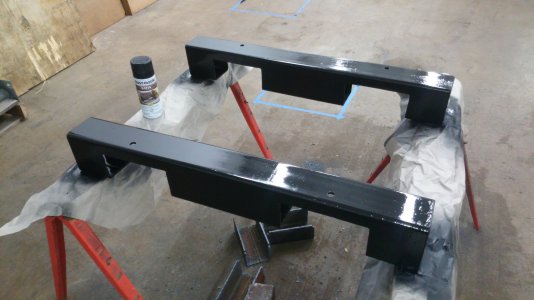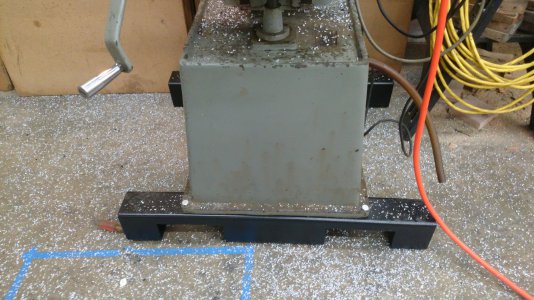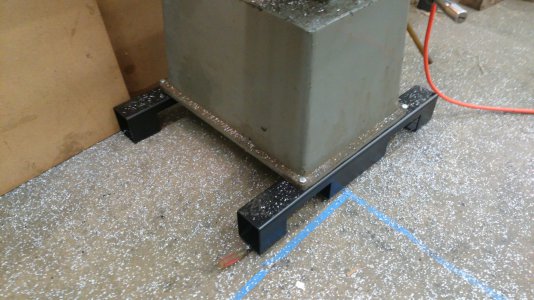Torch work is fun! I couldn't really take a cutting pic with my phone by myself so here's one side cut. Pro Tip: Two welding magnets and a piece of damned near anything make a great torch cutting guide. If you want to cheat and cut stuff that looks like a machine did it put a small hose clamp on the torch tip so it rests on your guide keeping the tip height constant.

I knocked the slag off the pockets with a grinder and put a nice radius on the ends so they won't be hard on shoes. Then painted them inside and out with Satin Black Rustoleum.

Today I bolted them on and stepped the mill down to the floor with the pallet jack and blocks of wood.

I knocked the slag off the pockets with a grinder and put a nice radius on the ends so they won't be hard on shoes. Then painted them inside and out with Satin Black Rustoleum.
Today I bolted them on and stepped the mill down to the floor with the pallet jack and blocks of wood.




